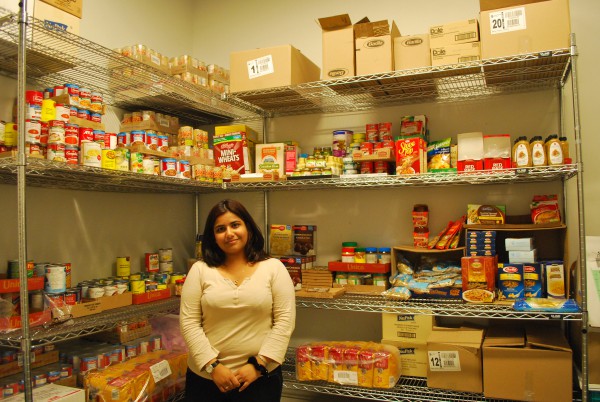The Student Association Food Bank is making necessities more accessible

Brought on by higher tuition fees, precarious work and housing issues, many students are finding themselves unable to pay for food.
“The need has increasingly grown, so much, and at colleges and universities it’s a bigger problem,” says Greg Philip, food bank lead staff at George Brown College, about the growing need for food banks.
The food bank provides basic necessities like produce, canned foods and hygiene products to students who have demonstrated financial need.
By providing this service, the Student Association “ensures that students can think properly and do their assignments with food in their fridges,” says Philip. “Without proper food you just cannot function, which can lead to all kinds of problems.”
1,163 students used the food bank between June 2014 to March 2015. Of those 19.5 per cent of individual households used the service one to two times while those who used the service more often at 10-37 times accounted for 32.7 per cent, though with fewer people per number of visits.
34 per cent of food bank clients are between the ages of 25-35, followed by youth 19-24 who made up 29 per cent. 253 children were among the people in students’ households who used the food bank.
The food bank is available at all three George Brown campuses. Students who wish to use the food bank just need to register and provide their timetables to use the food bank.
“There are some people who have prior experience using a food bank and some who do not,” Philip explained, adding that it is unfortunate that there is a stigma attached to using the food bank.
Among produce the food bank also distributes non-food items like TTC tokens, pet food and feminine care and hygiene products, such as shampoo, body wash and soap. Feminine care products like sanitary pads and tampons are available through the food bank as well as the Community Action Centre at St. James, Waterfront and Casa Loma campuses.
Students are urged not to visit for snacks and to treat the service as an emergency service for students who are struggling financially.
The hours of operation for the food bank are Mondays, Tuesdays, Thursdays and Fridays, 11 a.m. to 3 p.m. at the St. James campus and Mondays, Wednesdays, Thursdays and Fridays at the Waterfront campus. The Casa Loma location will reopen when renovations there have been completed.


